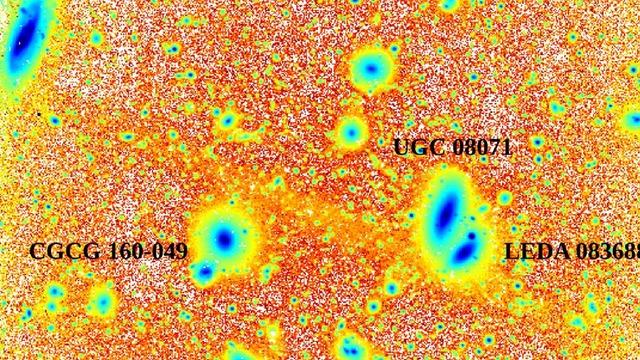“This giant current crossed our path by chance,” Javier Román, an astrophysicist at the Canary Islands Institute of Astrophysics, said in a statement. The team was initially studying the halos of stars scattered around the Coma Cluster to measure the dark matter surrounding the galaxy group, when they came across their signatures.
MYNET – FOREIGN NEWS
WHAT IS STAR FLOW?
Stellar streams are the name given to star fragments consisting of particles that have broken off or become entangled with each other due to the gravity of other galaxies. So far, scientists have managed to discover dozens of these star streams in the Milky Way Galaxy, which includes the Earth, or in different galaxies. But this time, researchers discovered a stream of stars that are not inside galaxies, that is, in space.
321 MILLION LIGHT YEARS AWAY FROM EARTH
These structures, located approximately 321 million light-years away from Earth, were launched by researchers as the first of their kind. It was stated that this structure, which they called the Giant Scatter Stream, was also the largest stellar stream ever found.
Study co-author R. Michael Rich, an astronomer at the University of California at Los Angeles, made the first observations of the Giant Scattering Stream with his personal telescope. The team then turned to the more powerful William Herschel Telescope at La Palmas in Spain’s Canary Islands to properly study the flow.
“IT WAS EXPECTED TO DESTROY”
Researchers expressed their surprise when they found the flow of stars within the galaxy cluster. The study’s co-author, astronomer Reynier Peletier from the University of Groningen in the Netherlands, said in a statement that the structure is “a very fragile structure in a hostile environment consisting of galaxies that mutually attract and repel each other.” “Normally you’d expect something like this to be torn apart by larger galaxies,” he added.

HOW IS IT SO BIG?
Although researchers are not sure how the stellar stream did not break up and grew so large, it is thought that dark matter may have caused this. Although dark matter makes up most of the matter in the universe, it is actually invisible and can only be detected through its gravitational interactions with visible matter. The research team said it is possible that dark matter lurking within the galaxy group helped shape the stellar stream into its current shape.

